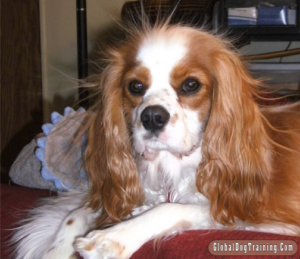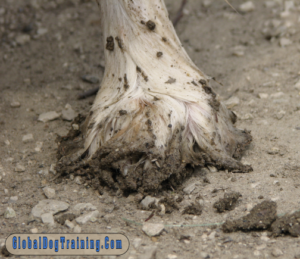Barks Blog
Stress-Free Dog Brushing

Brushing your dog on a daily basis has many benefits. Grooming or brushing your dog is more than just keeping his appearance spiffy. Brushing your dog’s coat every day not only keeps it free of debris but free of mats that can pinch your dog’s skin and cause infections. Daily brushing can also be a time to bond and check your dog over for lumps and bumps.
Brushing your dog on a regular basis can be used as a training opportunity to help teach your dog to enjoy handling and improves the bond you have with him. Gently caressing your dog during brushing also provides emotional and physical benefits for them and you. Gradual intervals of brushing paired up with treats can help ensure your dog enjoys brushing and his relaxed during the process. Your dog can learn to enjoy being touched, examined and brushed.
Use your daily brushing time to check your dog all over. You can place a non-slip bath mat on a table and place your dog on it, to allow you to access all parts of your dog with a great view and decrease the pain in your back. Be careful not to allow your dog to jump off the table, and do not leave your dog unattended even to turn your back. If your dog is uncomfortable with brushing, or heights, place a soft blanket or towel down on a dog mat. It’s not a bad idea to sit on something soft yourself.
Check your dog’s skin, coat and body for any signs of trauma, lumps, bumps or anything unusual. You can use a rubber or bristle brush on a short haired dog to loosen and remove dead fur. Start at your dog’s head and work your way down to his tail, including feet and underside. A medium-coated dog with dense fur or an undercoat does well with an undercoat shedding rake and a bristle brush. Long-coated dogs do well with a slicker brush and pin brush. Be careful not to brush too roughly with the slicker brush since it can scratch your dog if used roughly. Pay attention to the areas that easily get matted like under the ears, arms and bottom. When brushing your dog be gentle and caring. This is not a time to be in a hurry and rip through their coat. If you brush your dog daily (including under the ears, arms, and bottom), you will unlikely have mats to deal with. Make sure you can see down to the skin when brushing, especially on longer coats.

Fuzzy feet accompany some breeds such as the Yorkshire Terrier, Golden Retriever, and Cavalier King Charles Spaniel. If you have a breed that has fuzzy feet it is important to make sure at least the bottoms of their feet are trimmed short. If the bottoms of a dog’s feet have fur, that fur can easily mat, causing pain and discomfort, and can even affect your dog’s ability to walk safely. If you choose to allow the top part of your dog’s feet to grow to what is commonly referred to as “slippers,” you will need to brush them including between the toes daily to prevent painful matting. The safest way to trim a dog’s feet is with electric dog grooming clippers. If you are at all uncomfortable doing this yourself, make an appointment with a professional dog groomer.
If your dog is uncomfortable with being handled or brushed, go very slow and don’t rush through the process. You will want to ensure that you are not eliciting any stress or anxiety. You want to gradually teach your dog how to be stress-free during handling, brushing or grooming. You are going to create a positive and rewarding environment around brushing. He needs to know that you will keep him safe and happy and that he can trust you.
- With your dog sitting and relaxed, slowly show him the brush. As he looks or sniffs it, praise and give him a treat. Repeat.
- Next, slowly show him the brush, touch the brush to his side or back, praise and give him a treat. Repeat.
- As your dog get more comfortable, do longer strokes before praising and treating.
- Once your dog is comfortable accepting longer strokes, do two strokes prior to praising and treating. Gradually increase the brushing before praising and treating.
- Repeat this process with all parts of your dog’s body, including ears, tail and under arms.
Once again, if your dog already is stressed or worried about grooming, take your time. Practice often (3-5 times a day). The more you practice in short sessions, the quicker he will overcome his anxiety about being brushed. As a gentle reminder, place your dog treat and brush somewhere visible to you and easily accessible so you can do a quick training session at a moments notice. Good luck and happy brushing!
For more articles by Tonya Wilhelm visit: https://www.raisingyourpetsnaturally.com
